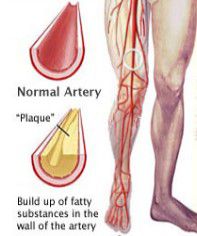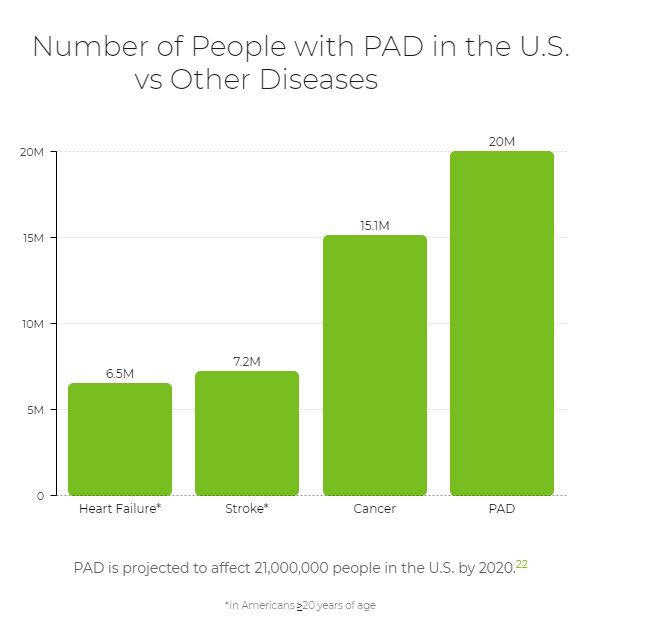Understanding the Unique Risk Factors for PAD in African Americans
Peripheral Arterial Disease (PAD) is a silent but deadly condition that disproportionately affects African Americans. Research shows that Black Americans are up to three times more likely to develop PAD than their white counterparts. This stark disparity arises due to a combination of genetics, higher rates of diabetes and hypertension, and limited access to healthcare. However, beyond the medical risk factors, there are also deep-rooted cultural and societal barriers that make early diagnosis and treatment of PAD particularly challenging for this community.
Dr. Polly Kokinos, a highly respected vascular surgeon with over 30 years of experience, understands these challenges. Having served underserved communities both locally and globally—including her missionary work at Tenwek Hospital in Kenya—she is uniquely positioned to provide compassionate, culturally competent care to African American patients facing PAD.
This article will explore the barriers preventing early PAD diagnosis in the African American community and how Dr. Kokinos and her team at South Bay Vascular are working to break down these obstacles.
Cultural Barriers to Seeking Early PAD Diagnosis
For many African Americans, historical distrust of the medical system remains a significant barrier to seeking medical attention for conditions like PAD. Generations of systemic healthcare disparities and unethical medical experiments—such as the Tuskegee Syphilis Study—have left lasting skepticism in many Black communities. This hesitancy often leads to delayed diagnosis and treatment, allowing PAD to progress to Critical Limb Ischemia (CLI), a severe form of PAD that increases the risk of limb amputation.
Additionally, the concept of self-reliance and resilience within Black culture often discourages individuals from seeking help for health issues until they become severe. Many African Americans feel a sense of duty to “tough it out,” prioritizing work and family obligations over personal health concerns. This reluctance can be particularly dangerous for PAD, a disease that advances silently, often without pain in its early stages.
The Role of Extended Families and Community Support
Unlike in some other cultural groups where medical decisions are highly individualized, many African American families rely on extended family networks and community institutions, such as churches, for guidance. When a loved one is diagnosed with a serious illness like PAD, the decision-making process often involves multiple family members. This means that healthcare providers must do more than just educate the patient—they must engage the entire family unit.
Dr. Kokinos recognizes this dynamic and works closely with families to ensure they understand the severity of PAD and the need for early intervention. Her patient-centered approach is based on relational medicine, rather than the transactional care often seen in large hospital systems. She takes the time to build trust, answer questions, and provide families with the resources they need to make informed decisions.
Financial Concerns and Healthcare Access
Another major barrier to PAD treatment in the Black community is the issue of affordability and access to healthcare. Many African Americans face challenges with health insurance coverage, making it difficult to seek preventative care. Even when insured, high co-pays, deductibles, and medication costs can discourage individuals from following through with necessary treatments.
Unlike many physicians who are constrained by large healthcare systems and administrative bureaucracy, Dr. Kokinos operates as an independent vascular surgeon, meaning she has the flexibility to offer tailored treatment plans that fit each patient’s financial situation. Her team at South Bay Vascular assists patients in navigating their insurance plans and finding cost-effective solutions for care.
The Stigma Surrounding PAD and Amputation
Many African Americans associate vascular disease with amputation, often believing that a PAD diagnosis is a precursor to limb loss. While it is true that untreated PAD can lead to amputation, early intervention can prevent severe complications. However, because of the deep-seated fear of limb loss, many Black patients avoid seeking medical attention until the disease has progressed to a critical stage.
Dr. Kokinos and her team emphasize the importance of early screening and non-invasive treatments that can save limbs and lives. She ensures that her patients understand that PAD is manageable when caught early, and that proactive care is the best way to avoid amputation.
Why African American Patients Trust Dr. Kokinos
Dr. Polly Kokinos is not just another vascular surgeon—she is a physician who has dedicated her life to serving communities in need. Her work at Tenwek Mission Hospital in Kenya has given her firsthand experience treating patients in underserved areas, reinforcing her commitment to providing equitable care. In Santa Clara County, she applies these same principles to help African American patients overcome healthcare barriers.
Unlike other vascular surgeons in the area who may rely on their hospital affiliations for credibility, Dr. Kokinos has built her reputation through skill, experience, and patient trust. She holds hospital admitting privileges, ensuring that her patients receive continuity of care, but she is not bound by the financial interests of a hospital system. This independence allows her to always prioritize what is best for her patients.
Conclusion: Taking the First Step
PAD is a life-threatening condition that disproportionately impacts the African American community. However, the barriers to care—ranging from cultural hesitancy to financial limitations—make early diagnosis and treatment difficult. The key to preventing amputations and saving lives lies in trust, education, and proactive healthcare decisions.
Dr. Polly Kokinos and her team at South Bay Vascular are committed to breaking down these barriers by providing compassionate, relationship-based care that empowers African American patients to take control of their health. If you or a loved one are experiencing symptoms of PAD—such as leg pain, numbness, or wounds that won’t heal—it is critical to seek medical attention before it’s too late.
If you or a loved one may be struggling to find answers to difficult medical questions and or a lack of compassionate care, please call our office to schedule an appointment with Dr Kokinos @ 408-858-3586.
We offer hope when others say there is none.


